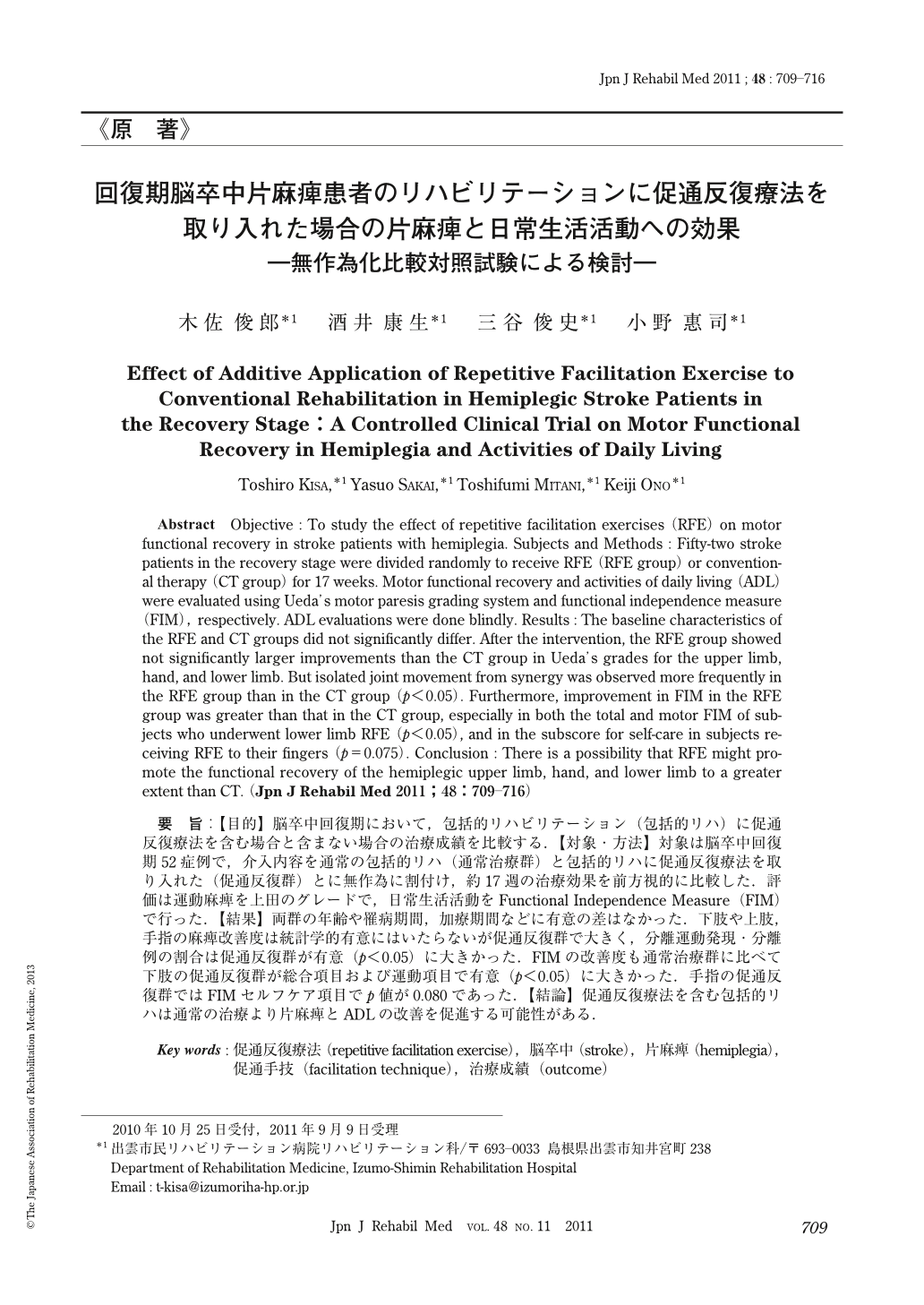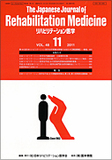Japanese
English
- 販売していません
- Abstract 文献概要
- 1ページ目 Look Inside
- 参考文献 Reference
要旨:【目的】脳卒中回復期において,包括的リハビリテーション(包括的リハ)に促通反復療法を含む場合と含まない場合の治療成績を比較する.【対象・方法】対象は脳卒中回復期52症例で,介入内容を通常の包括的リハ(通常治療群)と包括的リハに促通反復療法を取り入れた(促通反復群)とに無作為に割付け,約17週の治療効果を前方視的に比較した.評価は運動麻痺を上田のグレードで,日常生活活動をFunctional Independence Measure(FIM)で行った.【結果】両群の年齢や罹病期間,加療期間などに有意の差はなかった.下肢や上肢,手指の麻痺改善度は統計学的有意にはいたらないが促通反復群で大きく,分離運動発現・分離例の割合は促通反復群が有意(p<0.05)に大きかった.FIMの改善度も通常治療群に比べて下肢の促通反復群が総合項目および運動項目で有意(p<0.05)に大きかった.手指の促通反復群ではFIMセルフケア項目でp値が0.080であった.【結論】促通反復療法を含む包括的リハは通常の治療より片麻痺とADLの改善を促進する可能性がある.
Abstract Objective : To study the effect of repetitive facilitation exercises (RFE) on motor functional recovery in stroke patients with hemiplegia. Subjects and Methods : Fifty-two stroke patients in the recovery stage were divided randomly to receive RFE (RFE group) or conventional therapy (CT group) for 17 weeks. Motor functional recovery and activities of daily living (ADL) were evaluated using Ueda's motor paresis grading system and functional independence measure (FIM), respectively. ADL evaluations were done blindly. Results : The baseline characteristics of the RFE and CT groups did not significantly differ. After the intervention, the RFE group showed not significantly larger improvements than the CT group in Ueda's grades for the upper limb, hand, and lower limb. But isolated joint movement from synergy was observed more frequently in the RFE group than in the CT group (p<0.05). Furthermore, improvement in FIM in the RFE group was greater than that in the CT group, especially in both the total and motor FIM of subjects who underwent lower limb RFE (p<0.05), and in the subscore for self-care in subjects receiving RFE to their fingers (p=0.075). Conclusion : There is a possibility that RFE might promote the functional recovery of the hemiplegic upper limb, hand, and lower limb to a greater extent than CT.

Copyright © 2011, The Japanese Association of Rehabilitation Medicine. All rights reserved.


